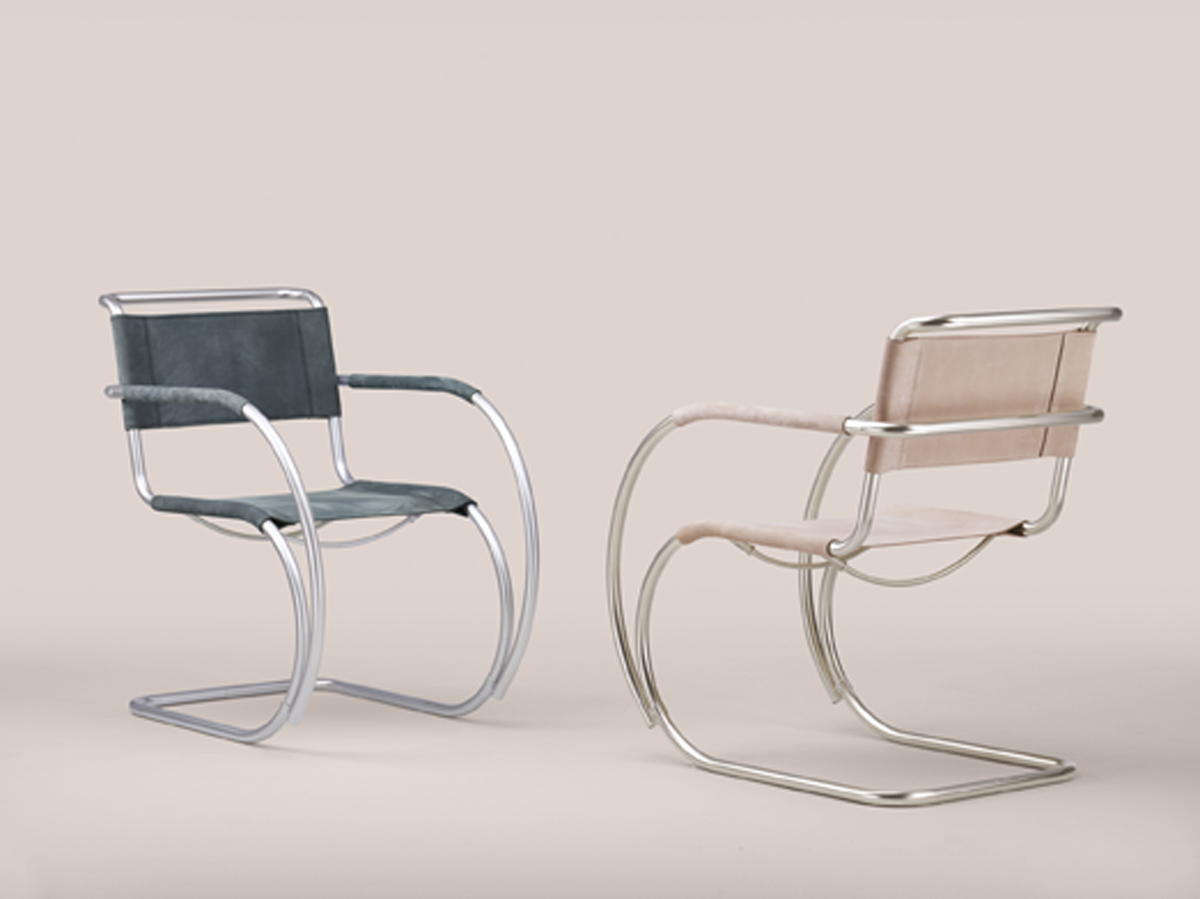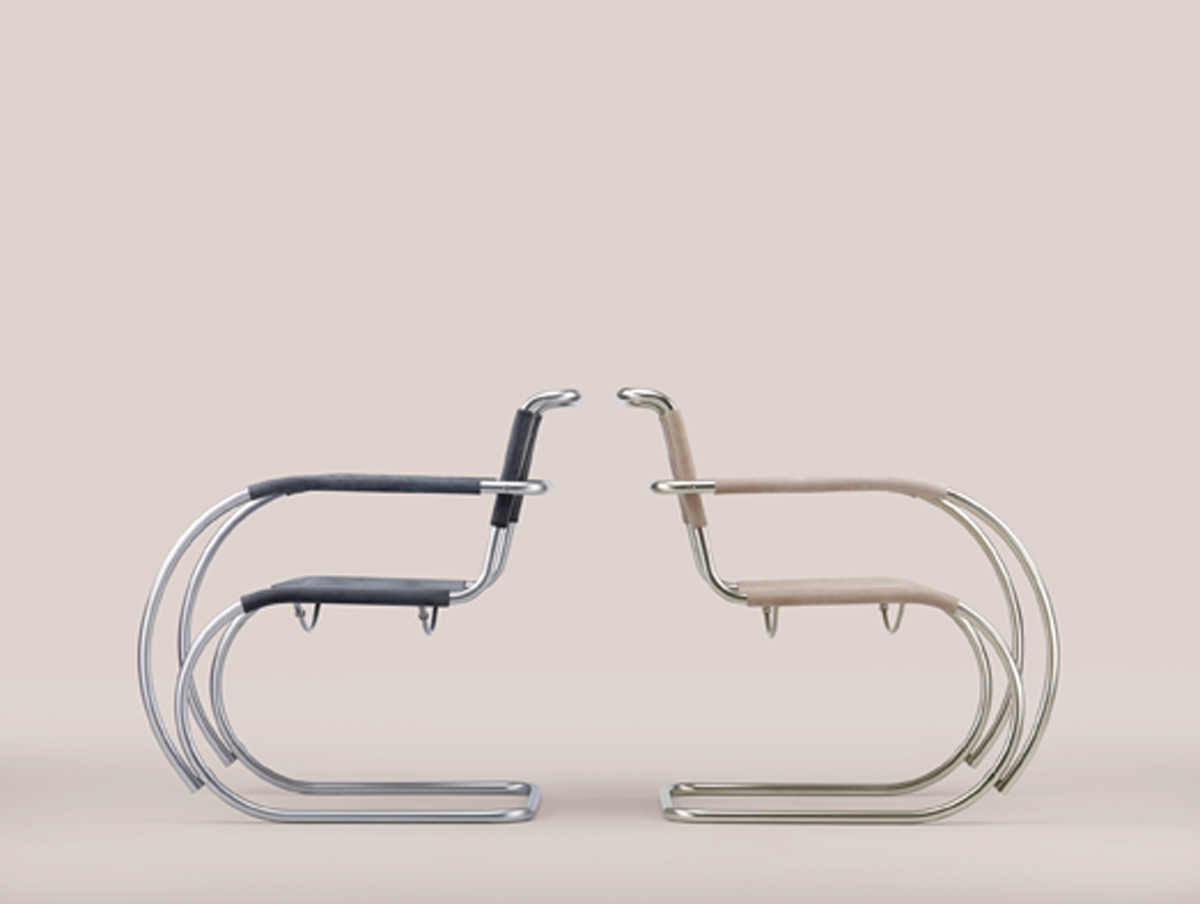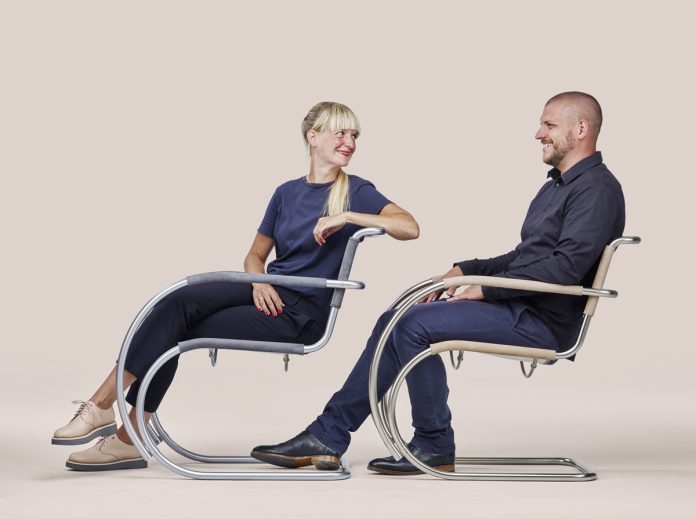Escaping the trap of the “re-edition” the designers, while strictly respecting the original features, have chosen materials (nubuck) and colors for a pair of chairs that seem to have been created from ex novo.

In this historical context, the managing director Brian Boyd looks forward instead, and decisively shifts the focus on the current reality of Thonet and on what it is today and becomes it to free itself from a glorious past and the courage of self a fresher image and more contemporary.
Besides Germany, which are the countries where Thonet is stronger and why?
Germany is obviously our strongest market, being the country in which our production is located, where the Thonet family lives and also because of the strong link between Thonet and Bauhaus. When talking to architects, dealers and end-users, we see a high degree of awareness for and knowledge about the brand. It is however important for us to be seen as a European and international brand and happily, we see a very positive brand recognition and commercial success in most Western, Central and Southern European markets. It’s important to us that people see Thonet not only as a furniture manufacturer, but understand and respect the tradition and heritage which the Thonet brand symbolises.
There are relatively new markets, but already strong – like Emirates and Dubai -, and emerging ones: where are Thonet energies addressed?
Having already mentioned that the recognition factor is highest in Western, Central and Southern Europe, we are aware of the growth potential in Asia and the Middle East. At the end of 2014 we established a subsidiary in Hong Kong to build up a presence in Asia and we have enjoyed success in Greater China, Japan and Korea. We are currently in the process of building relationships with key project dealers in Qatar, the UAE and Saudi Arabia to service the contract market in that region.

Distribution changes everywhere, which are the the types of retail that Thonet prefers? What does Thonet ask to a trade partner?
Happily, Thonet works with a broad cross-section of the furniture retail world. Some of our dealers have specialised their business model within the project sector. Others focus purely on the residential market. We consider it especially favourable that a large portion of our dealers work both with contract and home customers, as a high portion of the Thonet portfolio has a hybrid usage. Tubular steel classics are used both for meetings and at a dining-table, the 808 lounge chair is equally at home in a cosy living-room as in a business-lounge and the bentwood classic 209 is used in chic urban appartments, seniors‘ residences and restaurants. What we ask of our retail partners – regardless of their business model – is that they make a serious effort to understand and identify with the brand and are proactive in approaching the relevant target groups.
There are Thonet products that made history, is this enough nowadays to be considered and appreciated by designers and architects? Which are the strategies used in this area, so rich of opportunities?
You are referring to two parts of Thonet Collection; our bentwood heritage products and the tubular steel collection from the Bauhaus era. These are indeed product categories which immediately spring to mind for many architects and design-oriented clients. But a large part of our business is done with modern products and which have clearly identifiable roots in the classics collection, but were developed in the recent past and present. Our conference tables and seating, furniture for seminar and training rooms, our auditorium seating and modern hospitality classics like the 118 chair by Sebastian Herkner are important sources of revenue for us, even if they are much younger than the 214 by Michael Thonet or the S 34 chair by Mart Stam.








